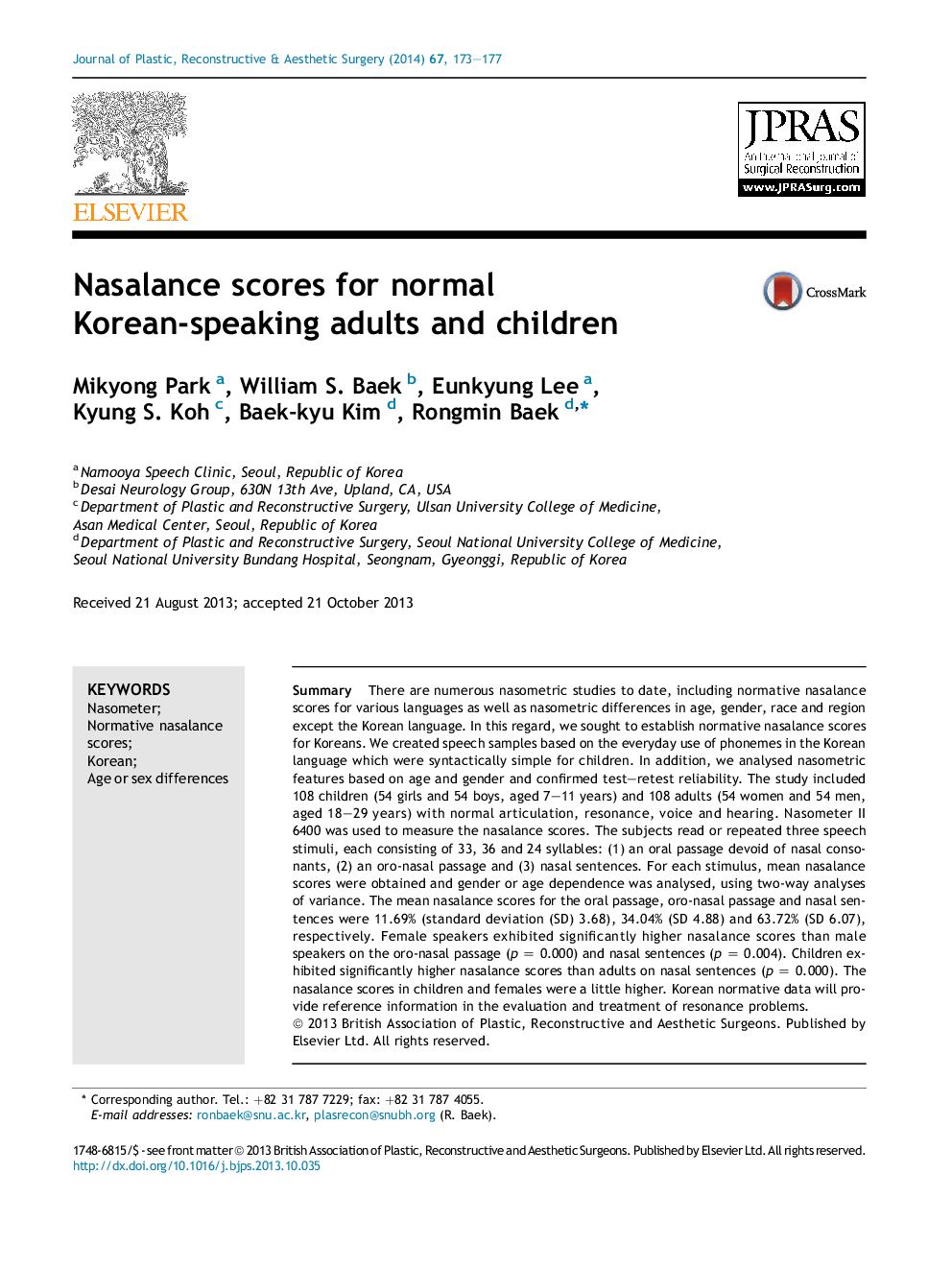| Article ID | Journal | Published Year | Pages | File Type |
|---|---|---|---|---|
| 4118135 | Journal of Plastic, Reconstructive & Aesthetic Surgery | 2014 | 5 Pages |
SummaryThere are numerous nasometric studies to date, including normative nasalance scores for various languages as well as nasometric differences in age, gender, race and region except the Korean language. In this regard, we sought to establish normative nasalance scores for Koreans. We created speech samples based on the everyday use of phonemes in the Korean language which were syntactically simple for children. In addition, we analysed nasometric features based on age and gender and confirmed test–retest reliability. The study included 108 children (54 girls and 54 boys, aged 7–11 years) and 108 adults (54 women and 54 men, aged 18–29 years) with normal articulation, resonance, voice and hearing. Nasometer II 6400 was used to measure the nasalance scores. The subjects read or repeated three speech stimuli, each consisting of 33, 36 and 24 syllables: (1) an oral passage devoid of nasal consonants, (2) an oro-nasal passage and (3) nasal sentences. For each stimulus, mean nasalance scores were obtained and gender or age dependence was analysed, using two-way analyses of variance. The mean nasalance scores for the oral passage, oro-nasal passage and nasal sentences were 11.69% (standard deviation (SD) 3.68), 34.04% (SD 4.88) and 63.72% (SD 6.07), respectively. Female speakers exhibited significantly higher nasalance scores than male speakers on the oro-nasal passage (p = 0.000) and nasal sentences (p = 0.004). Children exhibited significantly higher nasalance scores than adults on nasal sentences (p = 0.000). The nasalance scores in children and females were a little higher. Korean normative data will provide reference information in the evaluation and treatment of resonance problems.
